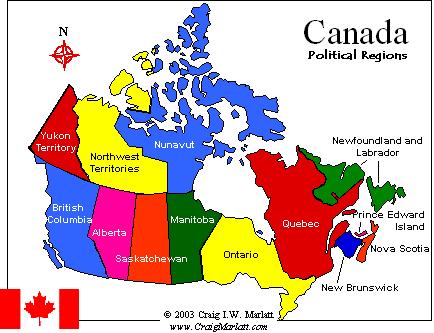Obesity Hot Spots in Canada
Wednesday, June 10, 2009 One of the most striking characteristics of the obesity epidemic is that it does not affect everyone alike. Indeed, it has long been noted, that despite correction for confounder, people living in metropolitan centres like Montreal, Toronto or Vancouver are far less likely to be obese than people living just outside the city in the suburb. Obesity rates increase further as one moves to more rural communities.
One of the most striking characteristics of the obesity epidemic is that it does not affect everyone alike. Indeed, it has long been noted, that despite correction for confounder, people living in metropolitan centres like Montreal, Toronto or Vancouver are far less likely to be obese than people living just outside the city in the suburb. Obesity rates increase further as one moves to more rural communities.
This issue was now analysed in detail by Theodora Pouliou and Susan Elliott, health geographers from McMaster University, Hamilton, Ontario, in a paper just published in Preventive Medicine.
The study examines sex-specific spatial patterns and clusters of obesity in Canada using BMI data from the 2005 Canadian Community Health Survey.
Results reveal marked geographical variation in obesity prevalence with higher values in the Northern and Atlantic health-regions and lower values in the Southern and Western health-regions of Canada.
Significant positive spatial autocorrelation was found for both males and females, with significant clusters of high values or ‘hot spots’ of obesity in the Atlantic and Northern health-regions of Alberta, Saskatchewan, Manitoba and Ontario.
Not only do these analyses point to important differences in obesity prevalence across Canada, but they also help identify hot spots, where it may beneficial to focus obesity prevention resources rather than spending these on areas, where obesity is far less prevalent (like inner city centres).
AMS
Toronto, Ontario


